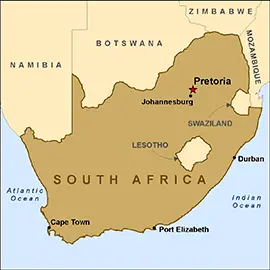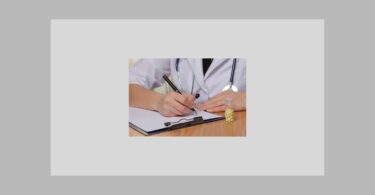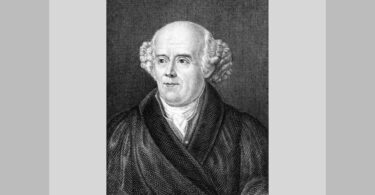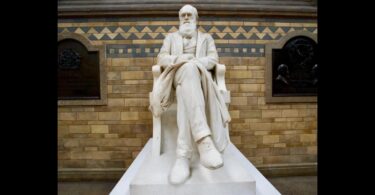1. A Brief History of Homoeopathy in South Africa

A number of pharmacists were reportedly carrying homeopathic remedies. The earliest reference to such was John Pocock, who owned a number of pharmacies in Cape Town circa 1847 and began to import large amounts of homoeopathic medicines in 1850. In 1857 John Pocock wrote the United Kingdom, asking that a homoeopath be sent to South Africa to be stationed in the Eastern Cape1. A number of practitioners (including Dr. Hugh Exton) came to South Africa and practiced homoeopathy, but it was with the publishing of a popular Dutch work on homoeopathic medicine in 1858 in Cape Town that interest in homoeopathy grew further. Dr. Smuts of Paarl became an advocate of homoeopathy and practiced it for some time2.
Following its establishment in Cape Town and after spreading to other parts of Southern Africa (including Kimberley, Bloemfontein, Johannesburg and Zimbabwe), the first homeopathic pharmacy in the Transvaal was opened by Willem Last in1941. The Homeopathic Society of South Africa was started in 1949 by Barbara MacFarland who had studied homeopathy while in England. Also in 1949, Dr William Henry Lilley, emigrated from London to South Africa and in 1951 established the first formal homeopathic course for professional homeopaths. By 1953 the course had produced the first crop of non-medical practitioners. Dr Lilley was instrumental in the formation of the South African Naturopathic and Homeopathic Association3.
By the mid-1950’s the few homeopathic medical practitioners present in South Africa joined forces with lay homeopaths to seek greater progress in the development of the profession. In 1956, the second group of practitioners graduated under Dr Bill Lilley, Tom Watson and other co-teachers. In that year the Lindlahr College was officially established. Lindlahr College ran a four year part-time course and graduated students in Homeopathy (D.Hom.), Naturopathy (N.D.), and Osteopathy (D.O). Dr Noel Puddephatt, who emigrated from England to South Africa in April 1963 and was one of the early teachers of both George Vithoulkas and Sheilagh Creasy, lectured at Lindlahr College in 1964.
In 1969, Dr Lionell Mathews started the South African Institute of Naturopathy and the International College of Osteopathy. He later established the South African Institute of Homoeopathy, where training was based on Brown Neil’s Anglo-American College of Homoeopathy course and students graduated with a Diploma in Homoeopathy after three years. Dr Mathews developed the school further and during the early 1970’s established the South African Faculty of Homoeopathy. The South African Faculty of Homoeopathy offered a four year course, graduating Homoeopathic practitioners with the D.Hom (Doctor of Homoeopathic Medicine).
The Homeopathic Medical College of South Africa (Johannesburg) was established soon after, as a four-year resident school. The three existing schools, Lindlahr, South African Faculty of Homoeopathy and Homeopathic Medical College of South Africa, were registered with the Ministry of Health in South and South-West Africa for the practice of homeopathic medicine. The courses allowed successful students to register and practice in South Africa as homeopaths, and were primarily run as part-time courses over four years.
By 1974 there were several colleges running, some of lesser repute. The Government stepped in, and under the Act of 1974, closed the colleges. The schools were given some time to close, which allowed enrolled students to complete their studies. By the end of 1982 all were closed.
In 1974, the government established a registration procedure for those already in practice, and about 350 homeopaths qualified, but it allowed no entrance to new practitioners. The register was re-opened in 1985. In 1982 a new Act, the Chiropractors, Homoeopaths and Allied Health Services Professions Act, (Act 63 of 1982) was passed, which established the Chiropractors, Homoeopaths and Allied Health Services Professions Council of South Africa as one of the five Health Professions Councils in SA. This council, under the said Act, provided statutory guidelines for education, allowing for new educational institutions to be established.
By 1987 Technikon Natal (Durban) started the first homeopathic course, a five-year full-time medico-scientific course in homoeopathy, based upon the medical curriculum. The practitioners graduated with a Masters Diploma Technology, Homoeopathy. In 1992, Technikon Witwatersrand (Johannesburg) also started a course in Homoeopathy. Both institutions (now Durban University of Technology and University of Johannesburg respectively) graduated practitioners with the Masters Degree Technology-Homoeopathy MTech Hom.
During the early 1990’s Dr David Lilley, together with Dr Berkeley Digby, started a course of training for Medical Practitioners leading to membership in the British Faculty of Homeopathy MF Hom(UK). In 1996 Lilley formed the South African Homeopathic Medical Association (SAHMA), along with medical doctors who had completed the British Faculty of Homeopathy.
The South African Faculty of Homoeopathy was established in the late 1990’s and continued until 2012 to award the MFHom(SA) and only permitted the enrolment of registered medical and homoeopathic practitioners.
The 1995, 1996 and 2000 processes led to a variety of qualifications to be included in the Homoeopathic register. In 1995, through an Act of Parliament, all persons registered as Practitioners in the TBVC States (Transkei, Bophutatswana, Venda and Ciskei) were registered under the relevant South African Professional Health Councils. In 1996 a process was launched to address problems of the past and “aggrieved practitioners” were afforded the opportunity to apply for registration. This process involved a two year post-graduate training program to ensure standards were upheld.
In 2000 the Chiropractors, Homoeopaths and Allied Health Services Professions Act was amended to become the Allied Health Professions Actea The amendments made it compulsory for medical practitioners to register as homoeopathic practitioners under the Allied Health Professions Council of South Africa (AHPCSA). During the subsequent “Grandfathering” process, medical practitioners who held the CEDH from France and the MF Hom (UK) were registered. As of 2000, the only qualification permitting registration in South Africa as a homoeopathic practitioner is the MTech Hom or its direct Masters level equivalent4.
In order to practice as a homoeopathic practitioner in South Africa it is required that individuals register with the Allied Health Professions Council of South Africa (AHPCSA). In order to do so, an individual is currently required to hold a 5 year Masters degree (MTech Hom) or equivalent thereof. At present, there are two tertiary institutions in South Africa that offer an MTech Hom qualification in homoeopathy: the University of Johannesburg (UJ) and Durban University of Technology (DUT).
The MTech Hom consists of a five year full-time medico-scientific course including scientific and medical subjects as well as therapeutic training covering conventional pharmacology, all forms of homoeopathy as well as Homoeopharmaceutics and Jurisprudence, which are legal requirements for registration. The original construction of the programme was based on the then medical programme available for medical students.
2. Current Legislative Framework
Homoeopathic practitioners in South Africa have been required to hold statutory registration over the past 33 years, where the first registration of Homoeopathic and Chiropractic practitioners occurred as early as 1974. While the statutory Council with whom individuals were required to register has changed in name or composition, the timeline5 as demonstrated below indicates the complexity and length of time the profession has undergone regulation and growth.
| Year | Event |
| 1974 | The Chiropractors, Homeopaths, Naturopaths, Osteopaths and Herbalists Act, Act 52 of 1974 was in operation for approximately six months, which provided a window of opportunity for the registration of chiropractors, herbalists, homeopaths, naturopaths and osteopaths who qualified for registration. |
| 1975 | The registers for chiropractic, herbalism, homeopathy, naturopathy and osteopathy were officially closed, which meant that existing registered practitioners remained registered, but no new registrations in any of these professions was possible. |
| 1982 | (1 August 1982): The Associated Health Service Professions Act, Act 63 of 1982 was implemented. This Act provided for the establishment of the South African Associated Health Service Professions Board and provided for application to be made to the Minister for the registers for chiropractic and homeopathy to be reopened. |
| 1983 | (6 October 1983): The SA Associated Health Service Professions Board wrote to the Minister and motivated a request that Act 63 of 1982 be amended to re-establish open registers for chiropractic and homeopathy and to provide for minimum education standards for registration in these professions. |
| 1984 | A national survey, “Investigation into the experience of the public with regard to the delivery of services by chiropractors, homeopaths, osteopaths, naturopaths and herbalists”, was conducted by the Human Sciences Research Council into the general public’s knowledge of and interest in chiropractic, homeopathy, naturopathy, osteopathy and herbalism. The HSRC found that at the time there was little knowledge and hardly any demand for naturopathy, osteopathy and herbalism services in South Africa. It was noted that the chiropractic course included elements of osteopathy and homeopathic course included elements of herbalism and naturopathy, but the only viable professions were chiropractic and homeopathy. |
| 1985 |
The registers for chiropractic and homeopathy were re-opened. The registers for the professions of herbalism, naturopathy and osteopathy remained closed [Ed.: These other registers were reopened by way of the publication of the Allied Health Professions Act in 2000, read together with the 2001 Regulations.] |
| 1995 | Act 40 of 1995 was passed to amend the 1982 Act, changing the name of the council from the Chiropractors, Homeopaths and Allied Health Service Professions Council to Chiropractors, Homeopaths and Allied Health Service Professions Interim Council (“Interim Council”). One of the objects of the Interim Council was to make recommendations to the Minister of Health on the constitution of a new council. This change was precipitated by the move to include the registration of other modalities. |
| 1996 | (12 February 1996): Dissolved council and established Interim Council (Chiropractors, Homeopaths and Allied Health Service Professions Interim Council)
The 1974 registration process left many graduates unregistered and in 1996 the 20 year battle for registration of these practitioners was resolved with a special registration process that allowed them registration under special conditions, which included a two year council controlled upgrading process to ensure equitable standards. |
| 1997 | The term of office of the Interim Council was extended by one year (originally set up for a period of two years). |
| 2000 | The Chiropractors, Homeopaths and Allied Health Service Professions Amendment Bill 2000, extends the term of office of the Interim Council from 3 years to 5 years, with retrospective effect from 13 February 1999. |
| 2000 | The Chiropractors, Homeopaths and Allied Health Service Professions Council Amendment Bill 2000, which amends Act 63 of 1982, is tabled before parliament during 2000. It will establish the Allied Health Professions Council. |
Currently, registration with the AHPCSA permits practitioners to diagnose and treat any condition as well as supply (including dispensing and compounding) applicable medicines to patients as required (as per section 1 (2) of the Allied Health Professions Act, 1982 (Act 63 of 1982).
Homoeopathic practitioners are also required to be licensed to dispense and compound medicines in accordance with section 22C(1)(a) of The Medicines and Related Substances Act, 1965 (Act 101 of 1965), read together with the Scope of Practice of a Homoeopathic Practitioner as provided for in terms of the Allied Health Professions Act, 1982 (Act 63 of 1982). As such, all practitioners are required to complete a course accredited and approved by the Pharmacy Council of South Africa for such purposes (Dispensing and Compounding course) and apply for such license with the Department of Health (DoH).
Due to the associated training of homoeopathic practitioners in South Africa, they are registered primarily as diagnosticians and as such enjoy a broad scope of practice and are included under primary health legislation such as the National Health Act, 2003 (Act 61 of 2003). Registered homoeopaths are currently not included in the public health initiatives of the country and are restricted to private healthcare services. It is the opinion of the homoeopathic profession that consideration be given to alterations to the scope of practice of homoeopaths, in order to facilitate their integration into the healthcare system as primary healthcare providers6, 7.
2.1 Access to Medicines
Medicines / Remedies relevant to a homoeopathic practitioner are listed as per Regulation 28 of the Allied Health Professions Act, 1982 (Act 63 of 1982).
As it currently stands, a homoeopathic practitioner may possess or have under his or her control, prescribe for a patient or supply to a patient and formulate, compound, prepare, manipulate or dispense a variety of crude substances (as defined), any homoeopathic substance, vitamins, minerals and supplements, injectable forms thereof as well as any schedule 0 product.
The Medicines Control Council of South Africa (MCCSA) published proposed amendments to the Medicines and Relates Substances Act, 1965 (Act 101 of 1965), in July 2011 for public comment for a period of 60 days. These amendments established the category of medicines, “Category D: Complementary Medicine” and included such medicines in the provisions of labelling and registration. Additionally, the MCC published Draft Guidelines relating to the registration of CAM products which specifically stipulated the criteria for safety, quality and efficacy of all medicines where comment was also required by end of September 2011. These documents appear to have established reasonable terms for registration for proprietary complementary medicine (CM) products based on those recommendations of the WHO and TGA7.
ACKNOLWEDGEMENTS: Prinsloo (2005) as significant contribution with amendments.
REFERENCES:
1. Bernstein RE. (1981). Correspondence: Homeopathic ‘firsts’ in South Africa; South African Medical Journal; LIX (59) June (6): 967-968
2. Laidler PW, Gelfand M. (1971). South Africa – Its Medical History (1652-1898): A Medical and Social Study; Struik Publishers; Cape Town, South Africa; pp. 338-339
3. Lilley D. (2006). The History and Development of Homoeopathy in South Africa; LMHI – Homoeopathy in South Africa; www.lmhi.net Accessed: 22 November 2006
4. Prinsloo, J. (2009). Homeopathic Training and Qualifications found in South Africa; www.biocura.co.za; 24 January 2005
5. Complementary Medicine Trust (CMT). (2000) Complementary Medicine in South Africa: A Pilot Study; pp. 4-5
6. Gower N. (2009); Homoeopathy in South Africa: A discussion document; Prepared for the Homoeopathic Association of South Africa (HSA); 20 April 2009
7. Gower N. (2011); The Regulatory Status of Homoeopathy in South Africa; Prepared for the Homoeopathic Association of South Africa (HSA); 14 November 2011




Thanks brother for sharing this lovely article about south Africa. It a good and formative.
What about Dr Gertjies of Transvaal
Hi there @Dr AR Isaacs,
Do you know anything regarding Dr Gertjies and if he still has a practice or shop that will sell any of his homeopathic medicine? I am enquiring about a vitiligo powder he prescribed to my grandmother which worked, and want to somehow see if i can get the powder for myself.
I was about to ask why Dr Gerkes of Irene, Pretoria is not mentioned. His reputation ran far and wide. People waited days to see him and to get his remedies which he compounded. He charged only what people could afford and treated all people equally. He was the only doctor who through homeopathic / naturopathic means cured my brother of the worst eczema paediatricians had seen. For good! He was a great man. It’s a shame time has now relegated him into obscurity.
I see that Pim Van de Veen is not mentioned. He ran the Homeopathic registration from his clinic in Pretoria for many years. He also treated me for a gall bladder problem and helped me to get my own practice started. Does anyone know what became of him? He was an engineer in his ‘day job’.